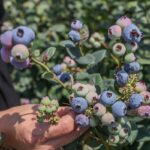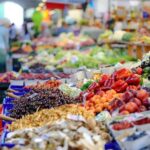Agronometrics Interviews: Avocados From Mexico

In this installment of the ‘Agronometrics In Interviews’ series, Sarah Ilyas studies the state of the Mexican Avocado season in an exclusive interview with Miguel A. Barcenas, Strategy and Marketing Consultant at Avocados From Mexico. The series is based on interviews with esteemed professionals from the industry, focusing on a specific origin or topic visualizing the market factors that are driving change.

Miguel A. Barcenas, Strategy and Marketing Consultant at Avocados From Mexico
Q: What are your comments on the recent inclusion of Jalisco as an avocado exporter to the US?
The Association of Growers and packers that export Hass Avocados started in 1997. It all started when the US opened the borders for Michoacán. The association was formed to control many things including quality, traceability, food safety, and also to put the marketing muscle behind the brand ‘Avocados from Mexico’.
The association represents 80 packing houses in more than 36,000 growers in Mexico. Up until a few months ago, it was only Michoacan sending fruit to the US. But now the USA opened the door to Jalisco as well. We moved from 67 packing houses to almost 80 packing houses.
Basically, the association makes sure that the product we export to the world is of the top quality, top certifications, top traceability, food safety, and of course, dry matter quality, a guarantee to every market we sell in the world. The perspective for Jalisco, of course, now that the US is open is they have a new client that they can export to.
Of course, during a period of time, they used to export to Japan, Canada, and Europe, but now they are open to the US. I think it's going to be a year where everything balances out and then markets like Europe, Japan, Canada will continue to grow.
Q: How's avocado production playing out in Mexico ?
Basically, Mexico is a very particular country. Obviously, we are the original land of Avocados. Avocados originated in Central America in Mexico millions of years ago. Mexico and in particular Michoacán, is the only part in the world where avocados bloom four times a year.
Chile has one season, Peru has one season, California has one season. Michoacán has four seasons. At the same time, when you visit one of our orchards at any point in time, you have fruit ready to be harvested, fruit that is growing. We have four blooms. It's a very interesting difference versus other origins because we are available year round.
Q: AFM always puts together an impressive campaign for the Super Bowl, what are your thoughts on that?
Well, basically as part of the association, on top of giving services to our growers and packers in terms of traceability, food safety, etc. We also collect a fee to put together a marketing campaign. We own the brand Avocados from Mexico. It is registered worldwide.
Basically, that money puts the muscle behind very important marketing campaigns, mostly in the US, Canada, Japan. We have put together promotions in China, South Korea as well. But our three main markets are US, Canada and Japan.
 Source: USDA Market News via Agronometrics.
Source: USDA Market News via Agronometrics.
(Agronometrics users can view this chart with live updates here)
Q: Do you have any prospects of opening up markets in any other parts of the world?
Actually, the pandemic took a very heavy toll on our plans. Prior to the pandemic, we were promoting in China, South Korea, Japan, Canada and the US. But the logistics, the freight, and the maritime times were very bad during COVID times.
We are now basically focusing only on those three markets, US, Canada, and Japan. But the prospects are pretty good for opening other markets in the Middle East, Asia, Europe in the future.
Q: What are some of the challenges that the Mexican avocado industry is facing?
I wouldn't call it a challenge, I would call it one of the strengths, something we are building is sustainability. We have a very important agenda on sustainability.
We have signed a commitment with the United Nations to compromise on the green agenda, focusing on environmental sustainability, human resources, water conservation, and reforestation. We have a very strong muscle in making sure that our product is sustainable, that it's socially responsible, and that obviously is safe to be consumed.
This is one of the challenges we are putting on the table and we are making very strong commitments to have a product that is not only great tasting, and has great quality, but is also sustainable.
 Source: USDA Market News via Agronometrics.
Source: USDA Market News via Agronometrics.
(Agronometrics users can view this chart with live updates here)
In our ‘Interviews’ series, we work to tell impactful stories by collaborating with leaders in the industry. Feel free to take a look at the other articles by clicking here.
All pricing for domestic US produce represents the spot market at Shipping Point (i.e. packing house/climate controlled warehouse, etc.). For imported fruit, the pricing data represents the spot market at Port of Entry.
You can keep track of the markets daily through Agronometrics, a data visualization tool built to help the industry make sense of the huge amounts of data that professionals need to access to make informed decisions. If you found the information and the charts from this article useful, feel free to visit us at www.agronometrics.com where you can easily access these same graphs, or explore the other 21 commodities we currently track.














































